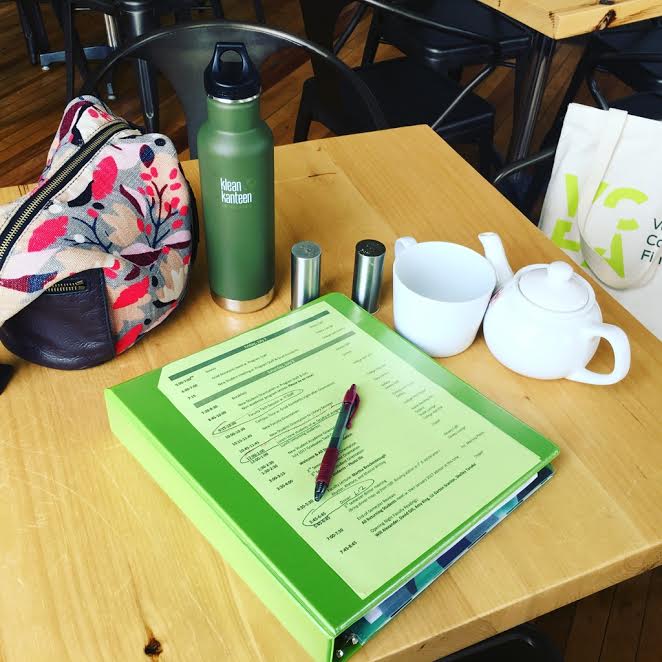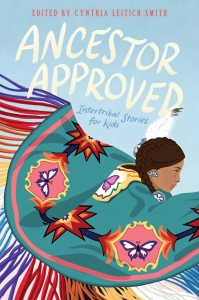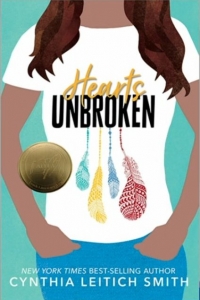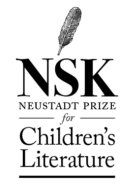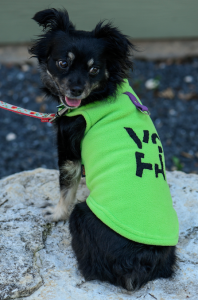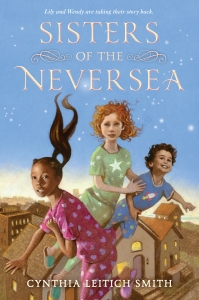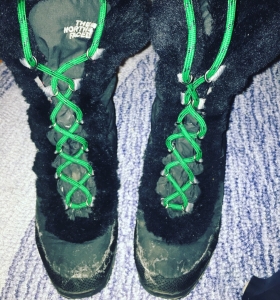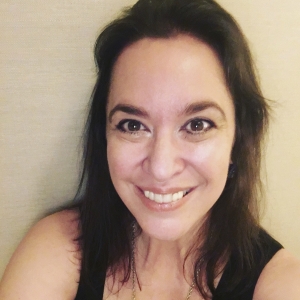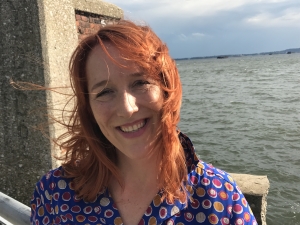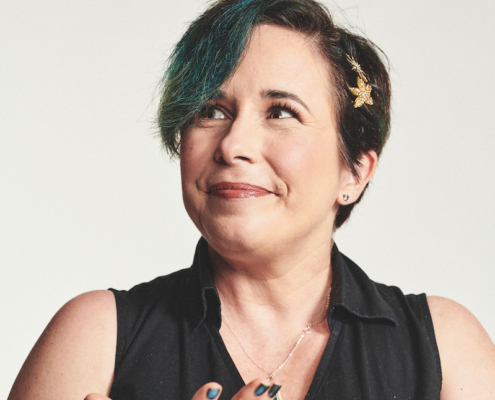Faculty Cynthia Leitich Smith and Alum Kim Purcell ’18
Kim Purcell: Let’s start with the anthology, Ancestor Approved. I loved it so much. What are your favorite elements of this anthology and why?
Cynthia Leitich Smith: Thank you! What I love most about the anthology is that it’s an immersive reading experience. The collection of short stories and poetry is centered on the Dance for Mother Earth powwow in Ann Arbor, Michigan. All of the stories in some way intersect with that two-day intertribal event. So, for example, over the course of the book, my character Ray, a co-protagonist of “Between the Lines” meets Joey, the protagonist of Dawn Quigley’s “Joey Reads the Sky.” All of the stories can stand alone, but as a group, they offer many more layers.
As you can probably imagine, this took a lot of collaboration and cooperative world building on the part of the sixteen contributors. We worked together using an online message board system, supplemented by emails, texts, phone calls, and pre-pandemic in-person meetings.
Probably the most challenging element was attaining a consensus (and therefore internal consistency) on the March weather.
KP: What did you learn, both as a writer and as a person, through writing Hearts Unbroken?
CLS: As a writer, I learned to more fully embrace the possibilities offered by back matter in books for young readers. Like many Native authors, I dismiss the suggestion that our stories should be viewed as social studies (rather than literature) first.
By the latter, I mean books designed and primarily used to educate non-Native people about us rather than compelling stories, poetry, etc. in their own right. My preference is to value our own children and teens as the heart of our audience, even while non-Native kids are welcomed into the reading circle. Consequently, I traditionally tended to be less enthusiastic about back matter on the theory that, throughout the body of literature, it too often projected the idea that books about Native people were not also for us. (I don’t mean to overstate this: I’ve included back matter in books in the past, but it tended to be more nuts-and-bolts than conversational.)
With Hearts Unbroken, I realized that I had reflections and information to share with both Native and non-Native teens that went beyond the narrative itself. I unclenched a bit, let go of some of my defensiveness and exhaustion to consider the possibilities—a more proactive approach in keeping with an Indigenous perspective that would also genuinely serve the whole readership.
The novel includes a reflective author’s note, Mvskoke language source notes, a glossary, and acknowledgements, all of which I hope are illuminating and validating to both Mvskoke kids, other Native readers, and non-Native readers.
One of my recent career highlights has been to revisit my first three books—Jingle Dancer, Indian Shoes, and Rain Is Not My Indian Name—to repackage them for paperback and, with the latter two, e-book editions. First, it’s deeply humbling to comb through one’s first novel more than twenty years later, well aware of how much you’ve grown as a writer. But the goal wasn’t to hit DELETE and provide the version of Rain Is Not My Indian Name that I would write today. The goal was to take the pre-existing text and update it in terms of technology, mainstream cultural references, and language choices. All three repackages will include more personal author’s notes than the originals.
KP: Congrats on the international NSK Neustadt Prize and being named to the Katherine Paterson Endowed Chair at VCFA! Both are huge honors! Can you describe what they mean for you?
CLS: I’m surprised, honored, and grateful. Did I mention, surprised?
For me, VCFA is a home. I’ve been teaching at the college since 2004 and have so many dear memories and friends from the ongoing experience. It just keeps getting better.
In many ways, I feel like I’ve come of age alongside the program. We both had a strong foothold when we met, but VCFA has held my hand and supported me through sprints and stumbles.
Over the past sixteen years, we’ve both become stronger, more confident and innovative. We’ve made more connections and deepened our expertise alongside our every expanding family.
The connection to Katherine Paterson herself is especially dear because she was one of my favorite authors as a child. In fact, my first novel, Rain Is Not My Indian Name, was in part inspired by her Bridge to Terabithia—both touch on grief and healing, though her book is about the build up and immediate aftermath of loss and mine focuses on the continuing journey.
As for the NSK Prize, it is a reminder of the blessing of communities in the creative life. If it hadn’t been for the Austin, Native/First Nations and of course VCFA creative communities, I would not have had the artistic, emotional and intellectual backing to continue growing as a writer and to weather changing tides.
Seriously, this—what?—my third publishing recession. Over twenty years, I’ve navigated professional and personal challenges, s-t-r-e-t-c-h-e-d to build a body of work across age markets, genres and formats, and managed to be both commercial enough to stay in print and literary enough to hold up my head in most creative conversations. I’ve also miraculously managed to largely reinvent my writing life four times (and counting).
All that only happened because I had mentors, friends, colleagues, students, editors, and a career-long agent, who held me up along the way. VCFA was a huge part of it all.
KP: You’ve always had a strong online presence. Do you have any recommendations for writers and students about how they should engage online with the writing community?
CLS: Each person’s mileage may vary, but for what it’s worth: I don’t think of how I engage online as marketing but rather participating in the conversation of books…with a focus on craft, career, and cheer.
Students and alumnx may want to check out my lecture on the VCFA Commons, “The Authorial Voice: The Page, Podium, Platform & Persona (Plus, Nurturing Your Writer’s Heart).”
But essentially, my online philosophy mirrors my in-person philosophy. I try to be helpful, assume the best of people, err toward forgiveness, lift up spirits, embrace opportunities to play and encourage hope. That doesn’t mean being oblivious or silent in the face of issues that need to be addressed. It can sometimes mean seamlessly signal boosting someone who’s a better person to speak to something (while staying out of the way of their message).
For those who’re enthusiastic about expanding their online outreach, my recommendation is to set small, attainable goals. For example, I’m making an ongoing effort to wish my Instagram followers a good week, coupled with a photo of flowers from my home arrangements or neighborhood walks. I’m also more intentionally sprinkling in photos of my adorable long-haired Chihuahua, whose bright eyes are an automatic mood lifter.
I also suggest getting comfortable with your limits, which always change over time, and taking a team-oriented mindset. You may be more comfortable joining forces with fellow children’s-YA writers and illustrators in different ways to facilitate different types of conversations. The possibilities are endless. Just keep in mind that you can always reinvent.
KP: Right now, during the Covid pandemic, so many writer events are online, including our own VCFA residencies. How do you think these times will change how writers use technology in the future?
CLS: As it happens, I own a gorgeous crystal ball. (I bought it to research my short story, “Cat Calls.”) However, I won’t presume to say what will happen but instead share what I hope happens. I hope, when we can safely come together in person again, that we’ll still offer hybrid programming. It’s more equitable on a lot of levels, and we all need to make meaningful inclusiveness a much higher priority.
KP: What are some of the gifts of VCFA for you, personally, as a teacher/advisor? I imagine one of the best parts about residencies at VCFA is that you can learn from students, just as students learn from you. Can you think of a few things you’ve learned from student lectures or within the context of workshops at VCFA?
CLS: Such a timely question! My next published novel will be a middle grade novel, Sisters of the Neversea, which is in conversation with J.M. Barrie’s Peter and Wendy, also known as Peter Pan.
The acknowledgements of the book specifically highlight a couple of VCFA student lectures that were especially influential in my craft—Adina Baseler’s and Michael Leali’s “Building Better Boys,” and Clara Martin Hammett’s “The Voice of Wonder: From Wonderland to the Great Green Room, Moment of Wonder in Children’s Literature.” My takeaways were those you would tend to assume from the titles—writing across the nuances of gender and related societal influences as well as pausing to thoughtfully consider the meaning of wonder to children in real life as well as on the page.
More recently, Emma Kress’s “The Power of Hope” offered a boost on crafting writing and the writing life while Lakita Wilson’s “Diversifying Perspective in Kid Lit: Diversifying Our Writers to Gain Better Representation” was timely and timeless, prompting continued reflection, especially with regard to the minstrel-show influences still plaguing American culture, including children’s literature.
KP: Can you give a few examples of things you’ve learned from your fellow teachers at VCFA?
CLS: I’ve been known to say that part of the reason I teach at VCFA is because, for me, it offers continuing craft education. Like the previous question, I could go on about this indefinitely, so I’ll limit myself to the first few who spring to mind.
One of my favorite early workshop experiences was co-teaching with Rita Williams-Garcia. She has such a tremendous respect for children and appreciation of their respective developmental perspectives. When I’m trying to deeply connect with a young character, I can hear Rita in my mind saying: “Pull on your seven-year-old cap.”
It’s a metaphorical hat, that when you put it on transforms you back into your seven-year-old self! Everything that doesn’t make click with that seven-year-old you within must fall away, must get out of the way or be dealt with as such. That mental exercise clears away the clouds of life experience to give you a clearer, more authentic sense of a child’s point of view.
A few more thoughts…! Uma Krishnaswami taught me patience, even as we both at times struggled with it. Varian Johnson taught me to let loose joyful laughter. Deb Noyes, who used to be my editor, taught me that the right brushstrokes of language can make the broad strokes shine. Amy King taught me that it’s okay to admit my vulnerabilities and that seeking help is a sign of strength. I could go on, but big picture, it’s fair to say that I’ve learned so much from them all.
KP: When you work with students at VCFA, what do you emphasize in terms of their growth?
CLS: I make every effort to thoughtfully guide while also teaching them to become independent. The two years of the MFA program go by so quickly, and the very last thing I want is for our graduates to feel like they can’t do it without us.
Over years of teaching at workshops and conferences across the country (in addition to VCFA), I’ve taken notice of those writing teachers who’d rather hold court than nurture students in developing their own voices and best practices.
It’s a delicate balance, especially because each student meets me at an idiosyncratic place along their journey. But I hope to instill sufficient skills and confidence that they will continue to grow, stumble, persist and succeed—however they may define “success”—for years to come.
KP: What do you see as some of the most common craft mistakes that kidlit writers make? What are the antidotes to these mistakes?
CLS: Oh, my! Overwriting, underwriting, logic gaps, superficial characterization, editing out the voice…I could go on. In this, I’m talking about that point at which the writer has been working on the piece over time and numerous revisions and feels they have nothing more to give.
I’m not talking about early drafts, wherein you cannot accomplish everything at once from the outset and trying to do so would be largely immobilizing. Or perhaps make your brain explode.
But let’s say you’ve taken the manuscript as far as it seems like it can go.
At that point, I have two recommendations.
First, let it sit for at least six weeks. If at all possible, longer.
Second, have someone who has never read it before, read it out loud to you. (The latter can be a big commitment on a novel. Be prepared to pay them or buy them many, many yummy tacos.) Take notes on the exercise. Jot down the questions and challenges that occurred to you. Then dive back in.
KP: One of my passions is looking at how we can be creative during hard, stressful times. What advice would you give to current VCFA students (and any writers for that matter) on writing through tough times when you’re feeling anxious/depressed/stressed?
CLS: My main recommendation is to take care of yourselves and your loved ones. To the extent you have discretion, prioritize whatever writing-life activities fill you up rather than drain you.
If you have the need and resources, get professional help. Embrace nutrition and engage in exercise and play with the loved ones in your household or on your Zoom.
Do what you can. If you can’t write, read. If you’re struggling to read novels, try a picture book or short-story collection. A poem. Focus on small goals. One scene, one writing exercise, one research question. Celebrate every victory, no matter how tiny. Please know that I’m rooting for you, one and all. Dance to the “Xanadu” album.
Cynthia Leitich Smith is a New York Times and Publishers Weekly bestselling author, the author curator of the Heartdrum imprint at HarperCollins Children’s Books, the 2021 NSK Neustadt Laureate, and the Katherine Paterson Endowed Chair in the Writing for Children and Young Adults MFA program at Vermont College of Fine Arts. Her latest novel, HEARTS UNBROKEN, won the American Indian Youth Literature Award, was named to YALSA’s Amelia Bloomer list and received the Foreword Reviews Silver Medal in Young Adult Fiction. Forthcoming, Cynthia looks forward to the release of a middle grade anthology ANCESTOR APPROVED: INTERTRIBAL STORIES FOR KIDS, a middle grade novel SISTERS OF THE NEVERSEA, and THE BLUE STARS middle grade graphic novel series, co-authored by Kekla Magoon and illustrated by Molly Murakami. Cynthia lives in Austin, Texas, with her husband and a long-haired Chihuahua named Gnocchi. >> cynthialeitichsmith.com

